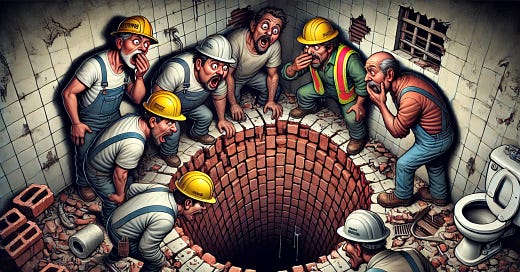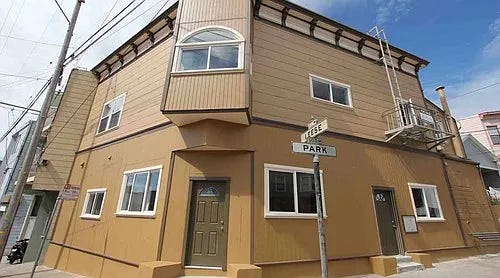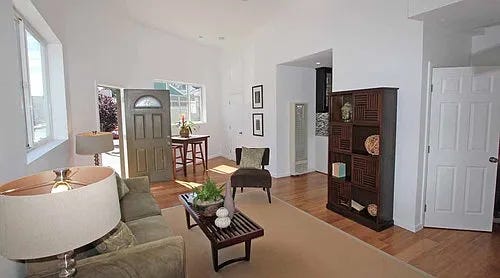Deal Story #2 – In Which We Found a 40-foot Brick Well and Ran Out of Money (Five Times).
Our fledging real estate investment empire almost collapsed before it got started
Author’s note:
Re-reading this post, it must sound like we were being reckless with our investors’ money on this deal. And in some ways we were – we were brand new at this and had never completed a renovation project even close to this complicated. But our investors also knew it too – we didn’t hide our limited track record.
Which doesn’t give one the right to take on way too much leverage (for example), but when I consider how valuable the lessons were that we learned on this deal, and how they shaped the trajectory of our business, this deal was probably the best thing that could have happened to us: Our investors made out OK and it wizened us up in ways that a more vanilla deal never would have done.
Fresh off the high of completing our first ever syndication, we dove into a complete hairball that nearly bankrupted our fledgling partnership.
All that happened on our second deal was that we found a 40-foot brick well under a rotten bathroom subfloor, discovered half the building had no foundation, and ran out of money five times.
We also discovered that an ugly building painted multiple shades of brown looks like, well, shit.
The GP had to float this nail-biter across the finish line, which I can attest was a nerve-wracking way to finish the project.
Here’s the story:
Back in the REO heyday of 2011, a little 4-unit deal came up in Bernal Heights (where I was living) for $400,000 – an unheard-of entry price in San Francisco, even at the time.
I showed up to the tour and found a zoo.
Anyone buying at the time was hunting for deep value, not a stabilized, shit-brown little four unit monstrosity in a neighborhood that still hadn’t hit the radar screen of San Francisco’s young professionals with money.
From my tour notes to my partners "I’ve been here 20 minutes and have already seen 20 perspective buyers."
After bidding against no one for our first deal, this was going to be a different experience.
We knew we'd probably have to bid with a due diligence timeline faster than we could raise capital - if we could raise it at all - but we also knew from having brokered 100+ foreclosures since 2009 that we could probably move faster than the bank.
That was the bet anyway, which was audacious since on our first deal our investors abandoned us, and we had to be bailed out at the last minute. Not to mention that the property itself was a total disaster.
But we took the flyer: $510,000 (25% over asking) with a 5-day contingency.
We had barely put our fundraising deck together when we got the good news – offer accepted.
Which was terrifying and exhilarating all at the same time: The training wheels were coming off.
In hindsight, just looking at the cobbled together exterior, a hodgepodge of peeling siding, mismatched windows and cracked molding, we should have known better.
After all, if there’s one thing you learn listing foreclosures, it’s that the inside usually looks a lot like the outside.
And the inside was even worse: completely torn apart, holes in the walls and ceilings, walls randomly stripped of their drywall, kitchens and baths exposed - its hard to know what was even happening in here before the bank got ahold of it.
But the physical condition may not have been as crazy as our financial projections capital structure. Reviewing it today, its cringe-worthy:
Here are the highlights:
$150,000 initial budget estimate, around half of what it ended up costing
GP profit share was 20% of equity (waterfall? what waterfall?)
Our projected year-7 sale price was 30% BELOW what we sold the property for less than a year later - and we still barley made money
Gridlines on our forma (perhaps our greatest sin)
Leveraged to the gills:
Purchase Price: $510,000
$185,000: Equity
$410,000: First lien
$80,000: Second lien
$230,000: Additional draws on second lien
$65,000: Unsecured debt from the GP
=> 81% loan to cost
But we had the itch, knew we had nailed the market timing, and the low purchase price meant we might actually have a chance to raise the money.
Which we did, in $25,000 increments from close friends and family willing to bet we’d bankrupt ourselves to make the deal work.
Which we almost did.
We closed, starting swinging hammers, and the problems began immediately.
I happened to be on vacation early in the demo when I got a call from our project manager.
I was out of the country, instructions to the team that I was dark.
Me: What happened?
Him: We found a well.
Me: A what?
Him: A well. Brick, hand dug, about 40ft deep.
Me: Shit, what did the engineer say?
Him: Fill it
Me: Fill it then, we’ll talk when I get back
It turns out that during demo, we started taking up the bathroom floor and under flimsy linoleum and rotted subfloor, we found a 40-foot, hand dug brick well. And a few yards over as we discovered that an entire wall of the building was sitting on dirt.
If there had been a foundation at one point, there wasn't one now.
We were off to a rocky start, and our budget was blown within the first month of the project.
We kept trying to estimate the latest construction costs, but kept finding weird and unexpected problems. It turns out that 100-year old buildings that haven’t been renovated in decades have surprises behind every wall.
Fortunately, our contractor was up for the challenge, and as an experienced house flipper himself, took pity on our ignorance rather than advantage of it.
In hindsight, I don’t know if we truly appreciated how lucky we were to have chosen him - he could have destroyed the project, and our real estate investor dreams, before they even got started.
Three of the four units were vacant, and somehow we managed to keep the upstairs tenants happy enough during construction to keep paying rent.
But it was getting dicey - every time we thought we had drawn enough cash from our expanding second lien, the budget would grow.
One of the chief challenges of the project was that each of the three units we were renovating were totally different. Different layouts, different ceiling heights - different problems.
Fortunately our second lien holder was a family friend and was happy to keep putting out his investors’ money given the laughably low our basis was, but even he started to get nervous as his loan on its own started to approach our purchase price.
He cut us off at $310,000 on an original $80,000 note amount.
And then the real stress began.
We were nearing the end of the project, had the finish line in sight, but still had bills to pay.
At the time, our business was still floundering and we were paying ourselves the bare minimum to pay the rent. None of us had nest eggs, so the idea of floating the rest of the project was problematic, to say the least.
Our original plan had been a 7-year hold, but we had taken on so much debt that the cash flow once rent was coming in wouldn’t support a loan that was big enough to refinance it all out.
And at the time, vacant units were worth more than occupied ones, so starting to rent them out to collect the cash flow would have impaired the value we so dearly needed.
We did the math and figured that with about $50,000, we could push the thing over the finish line, get it on the market, and with any luck, sell.
We drew straws to see who had to post the first tranche, and by the time we hit the market, the GP team had taken turns posting $10,000 and $15,000 increments which totaled up to $65,000.
Which in hindsight sounds crazy that it was a big deal, but that was our reality at the time.
Man did it get close.
And then one final blunder: The paint color.
The building was hideous, so we decided to bring in a color consultant to choose the colors.
Huge mistake.
She took a horrible looking thing and somehow made it worse – brown on brown, which was either some cruel joke or just an awful slip up that we didn’t need at the time.
Frankly, it was embarrassing, but we didn’t have the stones (or the cash) to stop the paint job midstream.
When we finally hit the market, we were begging vendors, from stagers to subs, to just hold our a few more weeks, we promise that we’d pay.
And crickets.
The San Francisco market was far from healed at the time, and anyone buying at the time was hunting for deep value, not a stabilized, shit-brown little four unit monstrosity in a neighborhood that still hadn’t hit the radar screen of San Francisco’s young professionals with money.
After a few weeks without an offer we started to fret.
After a month, we started getting really worried, contemplating a price reduction we really couldn’t afford to take.
Then he walked in – like an angel from heaven.
A good-natured tech entrepreneur armed with exit money needing a home.
And completely bailed us out.
We sold, paid off vendors, creditors, ourselves and finally investors, and even took home a few bucks in profit sharing for our troubles.
We walked away from that deal shaken – we had looked into the abyss, how construction projects can get out of hand quickly and if you don’t have proper reserves, and reserves behind that, and an emergency credit line behind that, the GP’s personal financial situation can get perilous in a hurry.
When the sale closed, we regrouped, licked our wounds, did a couple little condo deals in Oakland with the profits we had just made, and plotted our next move.
And in six months, we were back at it again …. Once again walking into a project where, later on, we’d discover that not all buildings have foundations.









